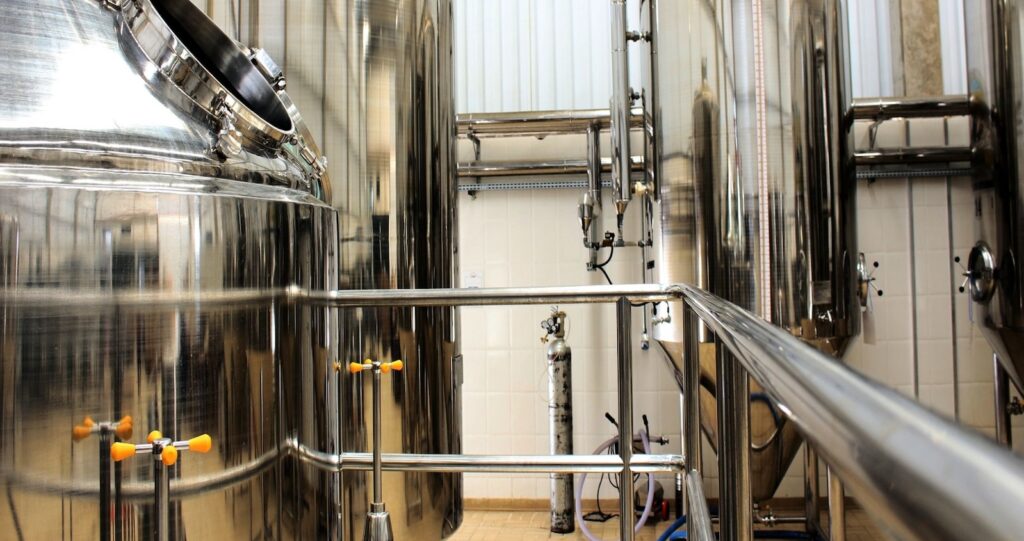Sign up for CleanTechnica’s Weekly Substack for Zach and Scott’s in-depth analyses and high level summaries, sign up for our daily newsletter, and/or follow us on Google News!

Fossil energy stakeholders who cheered US President Trump on to his second term in office are reportedly suffering buyer’s remorse, partly due to trade war fallout. That may be so, but Trump’s tariffs aren’t the only thing they need to fret about. Trump can also take credit for pasting his seal of approval on a significant bioeconomy initiative sponsored by the Department of Defense, aimed at pushing coal, oil, and natural gas out of the industrial petrochemical market.
The Bioeconomy Of The Future Is Coming, Eventually
The return to a bio-centered industrial supply chain after more than a century of deep petrochemical dependency has been a long slog. Here in the US, global industrial competitiveness has been a concern of bioeconomy advocates on both sides of the political divide since the 1990s. That includes the Defense Department’s interest in securing its supply of new advanced, high performing bio-based materials.
In 2000, a US advisory council produced a national bioeconomy roadmap titled, “Biobased Industrial Products: Priorities for Research and Commercialization.” They emphasized the potential for emerging bio-sciences to transform entire industries, and they warned that the US would be sidelined as other nations pick up the bioeconomy ball and run with it.
“Biological sciences are likely to make the same impact on the formation of new industries in the next century as the physical and chemical sciences have had on industrial development throughout the century now coming to a close,” they observed.
“The long-term growth of biobased industrial products will depend on the development of cost-competitive technologies and access to diverse markets,” they concluded, indicating that public subsidies would be needed to punch the US through a wall of global competition.
How Trump Launched The Bioeconomy Of The Future — No, Really!
Despite some measure of progress since the roadmap was published, bioeconomy watchers continue to warn that the US has already fallen way behind China and other nations that have prioritized biosciences for public funding. Considering the research cuts made by the Trump-Musk administration so far this year, catching up will be all the more difficult.
Somewhat ironically, though, Trump can take credit for pushing the US bioeconomy forward during his first term in office, which was bookended by a new bioenergy initiative in 2017 and the launch of the BioMADE nonprofit biotech incubator in 2020.
BioMADE was established as an addition to the existing US Manufacturing Innovation Institute network. The MII network is a broad public-private-academic program aimed at supporting US industrial competitiveness with a sharp national security focus. MII is funded through the Defense Department, which was tasked with administering the the network when it launched back in 2012, during the Obama administration.
The over-arching goal of MII is to bring “‘leap-ahead’ technology to the Warfighter while laying groundwork for commercial adoption by the private sector,” as the DOD explains. The DOD already lined up eight other institutions in the MII network by the time BioMADE officially revved up in October of 2020.
Next Steps For The US Bioeconomy
BioMADE (short for BioIndustrial Manufacturing and Design Ecosystem) joined the MII network with an award of $87 million from the DOD. It is headquartered at the University of Minnesota in St. Paul, but it’s not all about Minnesota. In addition to the DOD funding, BioMADE’s initial funding pot included more than $187 million contributed by 31 companies, 57 colleges and universities, six nonprofits, and two venture capital groups covering 31 states.
“Through a close relationship with DoD and the Military Services, BioMADE will work to establish long-term and dependable bioindustrial manufacturing capabilities for a wide array of products,” BioMADE explained at its launch in 2020. The nonprofit listed chemicals, solvents, detergents, reagents, plastics, electronic films, fabrics, polymers, agricultural products, crop protection solutions, food additives, fragrances, and flavors among its target list.
Five years later, BioMADE has just reached a key milestone with the establishment of two facilities to support bioeconomy innovators with shared biorefinery equipment and other resources. On April 29, BioMADE announced that it nailed down an investment of at least $132 million to establish its new, 122,000 square foot “Demonstration-Scale Biomanufacturing Facility” in Maple Grove, Minnesota. Along with additional funding from the DOD, the Minnesota Department of Employment and Economic Development also chipped in.
The demonstration-scale angle is the missing piece of the US bioeconomy puzzle. “The bioindustrial manufacturing industry in the U.S. currently faces a scale-up challenge due to a critical lack of pilot- to demonstration-scale infrastructure,” BioMADE explains. “As a result, American companies often have to seek relevant facilities overseas, taking American R&D efforts with them and risking IP loss.”
“The U.S. has been a global leader in biotechnology research and innovation for more than 40 years. However, the country needs additional assets to bring these innovations from the lab to commercial production,” emphasizes BioMADE CEO Douglas Friedman.
More Headaches For Fossil Fuel Stakeholders
On April 30, BioMADE also announced that it has secured a deal with the US biotech firm Lygos to set up a 25,000 square foot biomanufacturing facility in Hayward California, with another $80 million assist from the DOD.
BioMADE will be responsible for operating the new facility, which will house a suite of piloting, processing, and analytical systems, with Lygos as its foundational customer. “The move enables both organizations to expand their impact: BioMADE by accelerating and broadening access to scale-up infrastructure, and Lygos by focusing resources on commercialization of its high-performance sustainable solutions,” BioMADE explains.
In addition to supporting other innovators, the Hayward facility will support Lygos’s plans to make a serious dent in the US petrochemical profile. “Lygos has built a foundation that enables high-performing, sustainable solutions to be delivered at scale, right now,” noted Lygos CEO Eric Steen in a press statement.
“This represents an opportunity to focus on our commercial growth while accelerating broader access to world-class biomanufacturing infrastructure,” he added.
“The facility will focus on a broad range of products – including chemicals, materials, and food – to serve a variety of innovative biotechnology companies in the San Francisco Bay Area and beyond,” BioMADE explains.
A New Bioeconomy For The Industrial Midwest,
Hold on to your hats. BioMADE emphasizes that the two new facilities are strategically placed to support bioeconomy innovation at established centers of biotech research, and shepherd the new technology on to commercial production in the breadbasket states of the US, where a compact agricultural supply chain can help keep costs down.
The red state of Iowa, for one, already has a running start. The state’s “Crossroads of Global Innovation” bioeconomy initiative is designed to attract sustainability-centered firms like Lygos, and the effort is already paying off. Last fall, Lygos announced plans to set up a commercial-scale biorefinery at Fort Dodge, Iowa in partnership with the global firm CJ BIO.
“The location features 100% renewable electricity, access to sustainable feedstock, and excellent logistics, making it an ideal location to build a biorefinery,” Lygos explained in a press statement. The project will leverage an existing CJ facility adjacent to the corn mill of another global firm, Cargill, which will provide plant-derived sugar to support the venture.
Photo (cropped): The US bioeconomy is scaling up to compete head-to-head with petrochemicals, with an assist from the Department of Defense. (courtesy of Lygos).
Whether you have solar power or not, please complete our latest solar power survey.
Have a tip for CleanTechnica? Want to advertise? Want to suggest a guest for our CleanTech Talk podcast? Contact us here.
Sign up for our daily newsletter for 15 new cleantech stories a day. Or sign up for our weekly one on top stories of the week if daily is too frequent.
CleanTechnica uses affiliate links. See our policy here.
CleanTechnica’s Comment Policy




